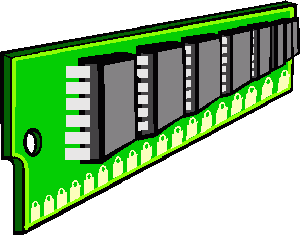
Mon-Fri 10am-6pm EST
Saturday 10am-5pm EST
Closed Sundays
EEPROM
An EEPROM (also called an E2PROM) or Electrically-Erasable Programmable Read-Only Memory, is a non-volatile storage chip used in computers and other devices (such as USB flash drives, in its flash memory version).
OperationThe EEPROM operates in three phases: OP-Code Phase, Address Phase and Data Phase. Each EEPROM device has its own set of OP-Code instructions to map to different functions. Some of the common operations on the EEPROM devices are Write Enable (WREN), Write Disable (WRDI), Read Status Register (RDSI), Write Status Register (WRSR), Read Data (READ), Write Data (WRITE). Other operations supported by some EEPROM devices are Program, Sector Erase and Chip Erase commands.
The OP-Code is usually the first 8-bits input to the serial input pin of the EEPROM device, followed by 16 to 24 bits of addressing depending on the depth of the device. The final phase of operation is the data phase. In case of WRITE, the controller needs to supply data till the chip select is low. In case of read, the controller needs to sample the data every serial clock edge till the chip select is low.
UsesSerial EEPROMs come in a range of capacities from a few bytes to over 128 kilobytes. They are typically used to store configuration parameters, and in modern computers they replace the hitherto CMOS nonvolatile BIOS memory. Unlike EPROMs, EEPROMs can be programmed and erased electrically.
Flash memory is a later form of EEPROM. In the industry, there is a convention to reserve the term EEPROM to byte-wise writable memories compared to block-wise writable flash memories. EEPROM takes more die area than flash memory for the same capacity because each cell usually needs both a read, write and erase transistor where in flash memory the erase circuits are shared by blocks of many (often 512×8) cells.
Newer technologies such as FRAM and MRAM are slowly replacing EEPROMs in some applications.

| "Here are the various used ram memory we have in stock." | ||
| 16mb EDO used Ram Memory | 32mb EDO used Ram Memory | 64mb EDO used Ram Memory |
| 32mb Sdram used Ram Memory | 64mb Sdram used Ram Memory | 128mb Sdram used Ram Memory |
| 256mb Sdram used Ram Memory | 512mb Sdram used Ram Memory | 1gig Sdram used Ram Memory |
| 128mb DDR used Ram Memory | 256mb DDR used Ram Memory | 512mb DDR used Ram Memory |
| 128mb Laptop used Ram Memory | 256mb Laptop used Ram Memory | 512mb Laptop used Ram Memory |

